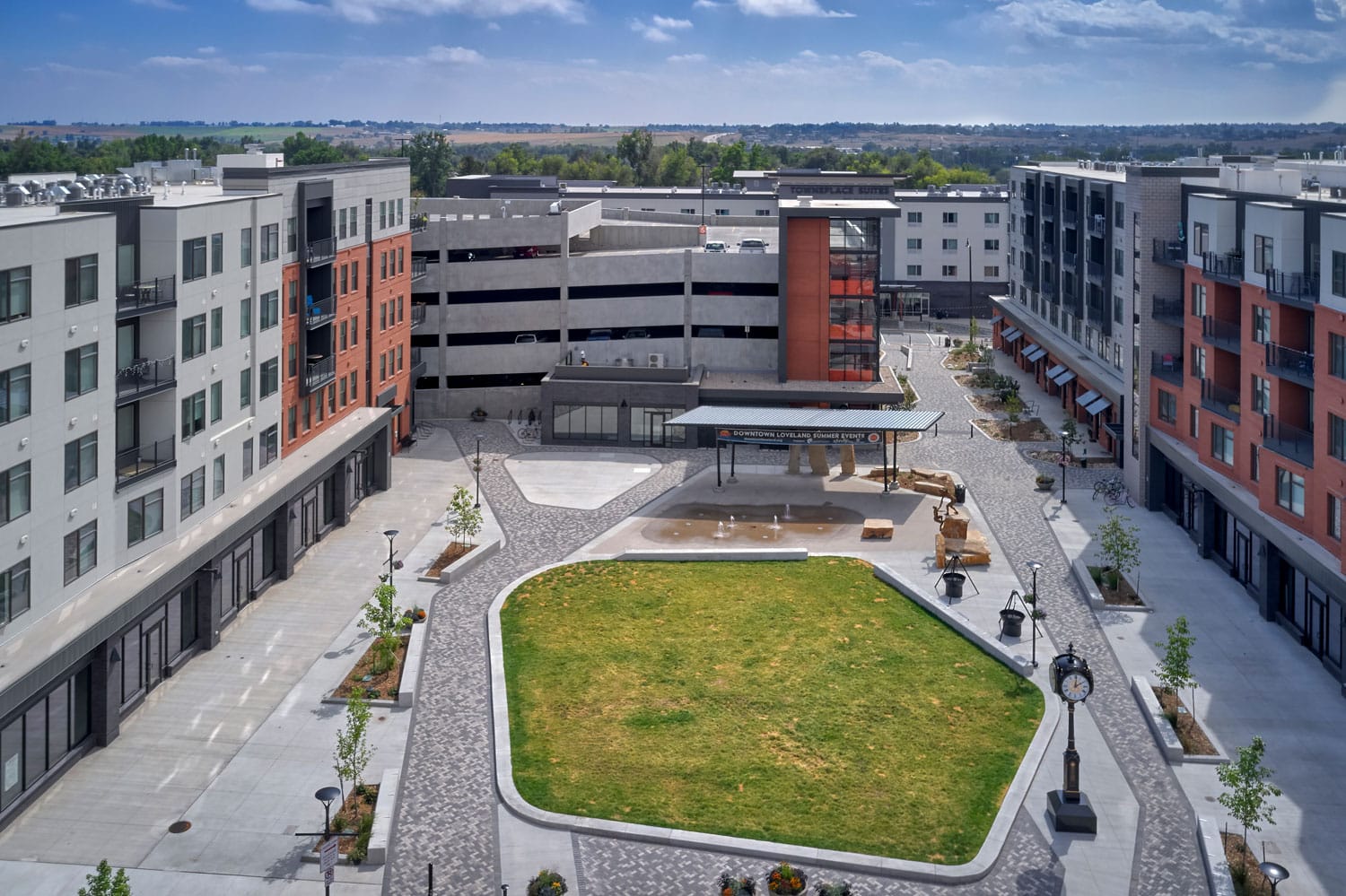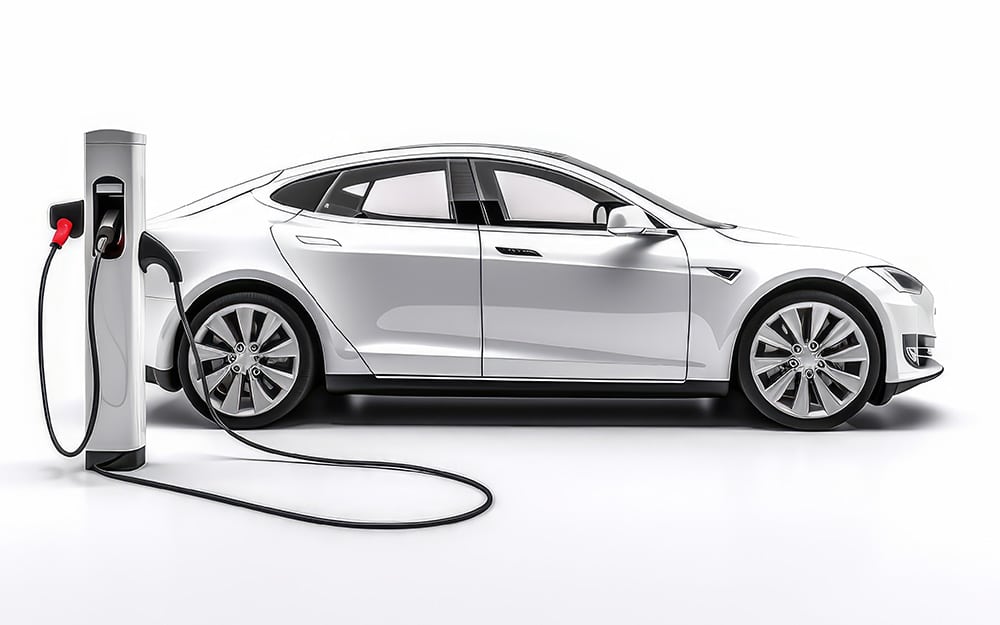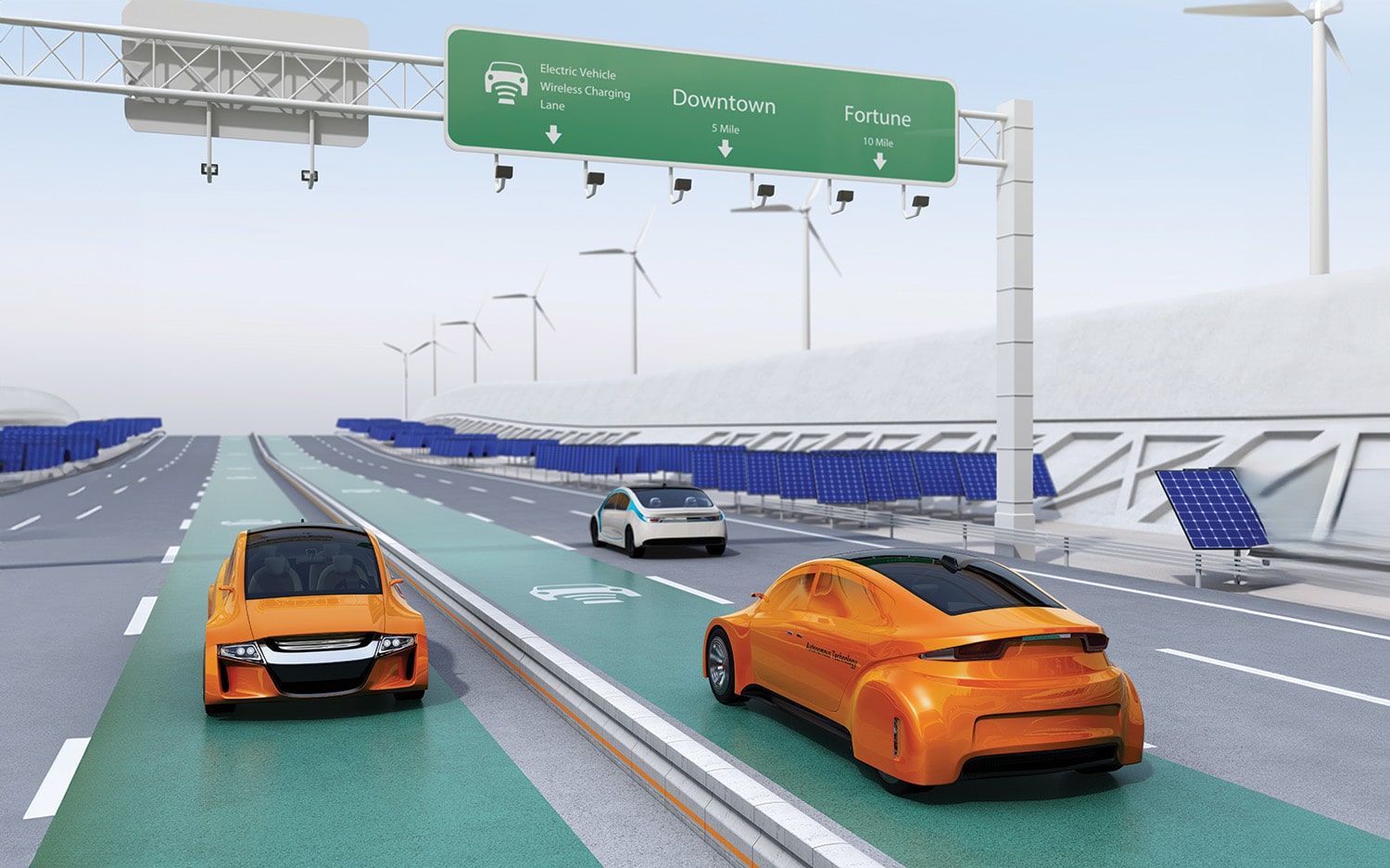
Seven-Generation Decision-Making
A major factor of sustainability is thinking about how we
Share:
Share:
“Our biggest challenge in this new century is to take an idea that seems abstract—sustainable development—and turn it into a reality for all the world’s people.”
—Kofi Annan
The parking industry, like many other industries, has committed itself to environmental sustainability. Outside of parking, people may find this counterintuitive. After all, our industry revolves around cars—or so people outside the industry think. (Parking is really about economic development, mobility, and a host of other social considerations, but I digress).
Any discussion of green parking must start with an understanding of what sustainability means. The Brundtland Commission defined it as “meeting the needs of the present without compromising the ability of future generations to meet their own needs.” When it comes to parking, and in particular structured parking, that means finding ways to build and operate facilities in ways that won’t negatively impact living conditions now and over the course of their 50-to-70-year lifespans.
As with any sustainably designed building, parking facilities must achieve the triple bottom line of environmental sensibility, social responsibility, and economic viability. Some people simplify that to “people, planet, and profit” – all reasonable goals. The intersection of these is sustainability.
So, what are the factors that drive the triple bottom line for parking facilities?
In today’s world, sustainable parking is less expensive to operate and maintain. For instance, LED lighting uses much less energy and requires less re-lamping than older technology lighting, which makes it inherently less expensive to operate and maintain. Also, power generated on-site by solar or wind can cut the power bill.
Sustainable practices also increase the value of your parking property and generally increases occupancy (and thus rent and general parking revenues). Features such as electric vehicle charging, preferred parking for low-emission vehicles, or access to transit or micromobility can attract customers.
Indoor environments can have pollutant levels greater than 100 times outdoor levels, which may lead to health issues with occupants or, in the worst case, sick building syndrome. While parking structures are typically not considered indoor environments, there are measures that should be taken to ensure that they are not contributing to health-related problems. Maintaining proper openness for natural ventilation and selecting waterproofing systems and coatings with low VOCs are just two examples.
Green buildings have 33% lower CO2 emissions and 26% lower energy use. By developing parking sustainably, you can preserve resources and reduce urban sprawl.
People care about sustainability. They see the impact that climate change is already having, and they want to work with businesses and organizations that are working to mitigate the effects of climate change. Pursuing sustainable practices will improve the public’s perception of your project and your organization.
The importance of sustainability in parking can’t be overstated. Single-occupancy vehicles aren’t going anywhere soon. There are 287 million registered vehicles in the United States, with more than five million projected to be added by 2025. 85% of commuters drive themselves to work, and of those, 95% park for free. Single occupancy vehicles emit much of the CO2 – about 4.6 metric tons per car every year. Mitigating carbon emissions from cars with good parking facility design, construction, and operating practices is a key part of the solution.

Despite the benefits outlined above, there are some potential barriers to sustainable design, including:
While parking garages could be LEED certified in the past, stand-alone parking garages can no longer earn certification on their own. Garages can, however, contribute to a larger project’s LEED certification. Parking has its own sustainable design standard, Parksmart. Developed and launched by innovators in the parking industry, and acquired by the USGBC/GBCI alongside LEED rating systems, Parksmart certifies high-performing, sustainability designed and operated parking facilities.
Parksmart certification bears a lot of similarities to LEED, including consideration of:
Somewhat different from LEED, though, Parksmart also focuses heavily on operations.
There are several basic elements to parking design that can help your garage be greener and earn Parksmart certification.
The process begins with selecting a site. You don’t want to replace a green field with a parking garage. That means avoiding building on parks, farmland, wetlands, or areas with endangered flora and fauna.
Management plays a huge role in promoting sustainability, and it’s really the area where you can make the greatest day to day difference. The most important management strategy for promoting sustainability is to not offer free parking. Make people understand that there is a cost associated with parking.
Build only what you need. Historically, zoning ordinances have required too much parking, and much of the time no one is parked in many of those required spaces. Providing shared parking is often an appropriate strategy. Take advantage of the mix of uses that the parking serves. If your garage is serves office space during the day, perhaps those parking spaces can be available to nearby hotels, theatres, sports venues, or other uses that need parking during the evening.
Parking facilities can promote TDM. Incentivize other modes of transportation like bikes, scooters, or walking. Offer incentives for carpooling and van pooling. Accommodate ride-sharing services. Include facilities for public transit, such as bus stops. Subsidize transit passes. Include bike lockers and shower facilities to promote bicycle commuting. Combined these strategies can be extremely powerful.
Recycling programs are a great way to promote sustainability, and they are easy to implement. Also, use sustainably produced and locally sourced products in your operations. This helps minimize the embodied carbon in the day-to-day processes.
Proactive maintenance is good management, keeping operations moving smoothly. It’s also good environmental practice because keeps the facility serviceable for more years and mitigates the extent and frequency of major repairs. Having a regular schedule for pressure washing surfaces and drains is essential. Also, have a formal program for repairing concrete cracks and spalls, expansion joints and joint sealants, and other waterproofing systems. A budget for annual engineering inspections will help your maintenance program be effective.
The quicker and more easily drivers can get from the street to a parking space, the less fuel they burn and the fewer emissions they create. Intuitive traffic circulation and simple and effective wayfinding are a must.
Technology can also help with this. Parking guidance technology directs drivers straight to areas of garages with available parking, or even to open individual spots. This is a great user amenity that also increases occupancy while promoting sustainability.
Have a plan in place to keep traffic always flowing smoothly, and particularly during peak traffic and event traffic. Traffic flow plans are particularly important for garages that serve sports venues, theaters, and other special events. The intent is to get traffic out of the facility and moving toward home with minimal idling and inching along.
Very short-term rentals, like Zipcar, allow people to rent cars for a few hours at a time. These programs help reduce the number of cars that are parking on city streets unused. Garages are the perfect place to offer this programming and store vehicles when they aren’t being utilized. Car sharing is an ideal pairing with TDM strategies that incentivize people not to drive their own vehicles because shared vehicles are conveniently available if a car is needed.
As you select equipment and technologies to operate your facility, make sure that they are energy efficient and confirm and document performance after installation so you can verify that they are working as they should.
Choosing the right construction materials can promote sustainability. Use materials with recycled content. Most steel, for example, has 70% recycled content or more. Also, pozzolans (waste materials like fly ash and slag that can be added to concrete to enhance its performance) can be a great sustainable choice. And when possible, use locally sourced materials.
Every construction project creates waste. Have a plan in place for responsibly disposing of that waste, diverting it from landfill to the extent practical.
Providing infrastructure for alternative fuel vehicles is a great way to promote sustainability. With the auto industry transitioning to all-electric fleets over the next decade or so, owners should already be adding EV infrastructure and clearly marking EV spaces, so they are easy to find. Not only will this help you serve your EV customers, but it will also help promote the transition to cleaner EV cars by encouraging your customers to make the switch to electric vehicles. The Green Construction Code calls for 4% of parking spaces to have EV equipment and for there to be enough capacity for 8% of employees to access EV charging. It also calls for 20% of parking spaces to be EV spaces in residential development. The state of California’s codes are even more aggressive, calling for 100% of residential spaces to have EV charging capabilities.
As mentioned earlier, supporting bicycle commuting is a great way to promote sustainability. Provide appropriate space to store bicycles and tools, tire pumps, etc. to enable routine maintenance and minor repairs.
The PARCS technology and operation are powerful tools for promoting sustainability. The less queuing you have at the entries and exits, the less cars will be idling and producing emissions unnecessarily. There are several technologies that can help reduce queuing, including pay-on-foot operations and pre-booking, both of which allow drivers to pay for their parking session before they get in their cars to leave the garage. Gated parking utilizing LPR or AVI allows people to enter and exit without having to manually interact with lane equipment. Better still are facilities without gates that allow vehicles to free flow in and out.
Properly inflated tires promote fuel efficiency. Providing tire inflation in your garage is another way to promote sustainability while offering a valuable customer amenity.
Exterior openings do more than admit natural light. They also provide vital ventilation to help disperse emissions from vehicles in the garage.
By circuiting your lights strategically, the lights around the perimeter can be turned on and off based on the position of the sun utilizing timers and light sensors. Dimming of interior lights and occupancy sensors that turn lights on when moving cars and pedestrians are present are becoming more prevalent.
Consider including pervious pavement, water detention strategies, bioswales /rain gardens in your design to collect stormwater and reduce flooding. Rainwater harvesting, where permitted, captures rainwater, and uses it for irrigation of plantings. It’s best to use water efficient landscaping that doesn’t require a lot of water.
Since we are talking about water, consider using low flow fixtures in bathrooms. Also, where possible, reuse sink water and water for showers (aka gray water) as irrigation for landscaping.
There are several ways that you can promote sustainability through the design of your garage’s roof. Green roofs covered in vegetation and blue roofs with stormwater retention reduce heat island effect and shade vehicles, which decreases fuel evaporation and reduces air conditioning use
In fact, there are several potential on-site energy generation options. In addition to solar, some parking facilities generate energy with wind turbines, geothermal technology, low-impact hydroelectric, and biomass. Each garage is different and requires its own unique approach.
The heat waves and extreme weather we’ve experienced this summer demonstrate how climate change is already impacting us. Part of the response to climate change is to attempt to minimize carbon emissions and the embodied carbon. This is just as true for parking facilities as it is for other building types. Sustainable design, construction, and operating practices don’t merely help reduce parking’s carbon footprint; they also represent a commonsense approach with sound financial footing that promotes occupant well-being.
Robert McConnell, PE, SE, is Vice President, Parking Solutions with WGI, and is a GBCI Certified Parksmart Advisor.

A major factor of sustainability is thinking about how we

Preliminary Results

Are We Ready for Wireless Charging Roads?
Parking & Mobility is IPMI’s flagship publication, covering the news, trends, analysis, technologies, and people of the parking and mobility industry, and how it affects and influences communities around the world.
| Cookie | Duration | Description |
|---|---|---|
| cookielawinfo-checkbox-advertisement | 1 year | Set by the GDPR Cookie Consent plugin, this cookie is used to record the user consent for the cookies in the "Advertisement" category . |
| cookielawinfo-checkbox-analytics | 11 months | This cookie is set by GDPR Cookie Consent plugin. The cookie is used to store the user consent for the cookies in the category "Analytics". |
| cookielawinfo-checkbox-functional | 11 months | The cookie is set by GDPR cookie consent to record the user consent for the cookies in the category "Functional". |
| cookielawinfo-checkbox-necessary | 11 months | This cookie is set by GDPR Cookie Consent plugin. The cookies is used to store the user consent for the cookies in the category "Necessary". |
| cookielawinfo-checkbox-others | 11 months | This cookie is set by GDPR Cookie Consent plugin. The cookie is used to store the user consent for the cookies in the category "Other. |
| cookielawinfo-checkbox-performance | 11 months | This cookie is set by GDPR Cookie Consent plugin. The cookie is used to store the user consent for the cookies in the category "Performance". |
| CookieLawInfoConsent | 1 year | Records the default button state of the corresponding category & the status of CCPA. It works only in coordination with the primary cookie. |
| elementor | never | This cookie is used by the website's WordPress theme. It allows the website owner to implement or change the website's content in real-time. |
| viewed_cookie_policy | 11 months | The cookie is set by the GDPR Cookie Consent plugin and is used to store whether or not user has consented to the use of cookies. It does not store any personal data. |
| Cookie | Duration | Description |
|---|---|---|
| _ga | 2 years | The _ga cookie, installed by Google Analytics, calculates visitor, session and campaign data and also keeps track of site usage for the site's analytics report. The cookie stores information anonymously and assigns a randomly generated number to recognize unique visitors. |
| _ga_02PMHW8YWC | 2 years | This cookie is installed by Google Analytics. |
| _ga_LC0QJJHM3J | 2 years | This cookie is installed by Google Analytics. |
| _ga_V9KYTSBYT2 | 2 years | This cookie is installed by Google Analytics. |
| iutk | 5 months 27 days | This cookie is used by Issuu analytic system to gather information regarding visitor activity on Issuu products. |
| Cookie | Duration | Description |
|---|---|---|
| mc | 1 year 1 month | Quantserve sets the mc cookie to anonymously track user behaviour on the website. |
| Cookie | Duration | Description |
|---|---|---|
| ultp_view_1052 | 1 day | No description |
| ultp_view_1058 | 1 day | No description |
| ultp_view_1060 | 1 day | No description |
| ultp_view_1064 | 1 day | No description |
| ultp_view_1068 | 1 day | No description |
| ultp_view_1070 | 1 day | No description |
| ultp_view_1072 | 1 day | No description |
| ultp_view_1078 | 1 day | No description |
| ultp_view_1082 | 1 day | No description |
| ultp_view_1088 | 1 day | No description |
| ultp_view_1100 | 1 day | No description |
| ultp_view_1103 | 1 day | No description |
| ultp_view_1114 | 1 day | No description |
| ultp_view_1118 | 1 day | No description |
| ultp_view_1122 | 1 day | No description |
| ultp_view_1125 | 1 day | No description |
| ultp_view_1130 | 1 day | No description |
| ultp_view_1132 | 1 day | No description |
| ultp_view_1135 | 1 day | No description |
| ultp_view_1541 | 1 day | No description |
| ultp_view_1554 | 1 day | No description |
| ultp_view_1557 | 1 day | No description |
| ultp_view_1560 | 1 day | No description |
| ultp_view_1563 | 1 day | No description |
| ultp_view_1568 | 1 day | No description |
| ultp_view_1572 | 1 day | No description |
| ultp_view_1576 | 1 day | No description |
| ultp_view_1580 | 1 day | No description |
| ultp_view_2305 | 1 day | No description |
| ultp_view_2321 | 1 day | No description |
| ultp_view_2338 | 1 day | No description |
| ultp_view_2342 | 1 day | No description |
| ultp_view_259 | 1 day | No description |
| ultp_view_270 | 1 day | No description |
| ultp_view_275 | 1 day | No description |
| ultp_view_286 | 1 day | No description |
| ultp_view_3074 | 1 day | No description |
| ultp_view_3115 | 1 day | No description |
| ultp_view_3334 | 1 day | No description |
| ultp_view_3336 | 1 day | No description |
| ultp_view_3338 | 1 day | No description |
| ultp_view_3340 | 1 day | No description |
| ultp_view_3346 | 1 day | No description |
| ultp_view_3354 | 1 day | No description |
| ultp_view_3361 | 1 day | No description |
| ultp_view_3367 | 1 day | No description |
| ultp_view_365 | 1 day | No description |
| ultp_view_367 | 1 day | No description |
| ultp_view_38 | 1 day | No description |
| ultp_view_3846 | 1 day | No description |